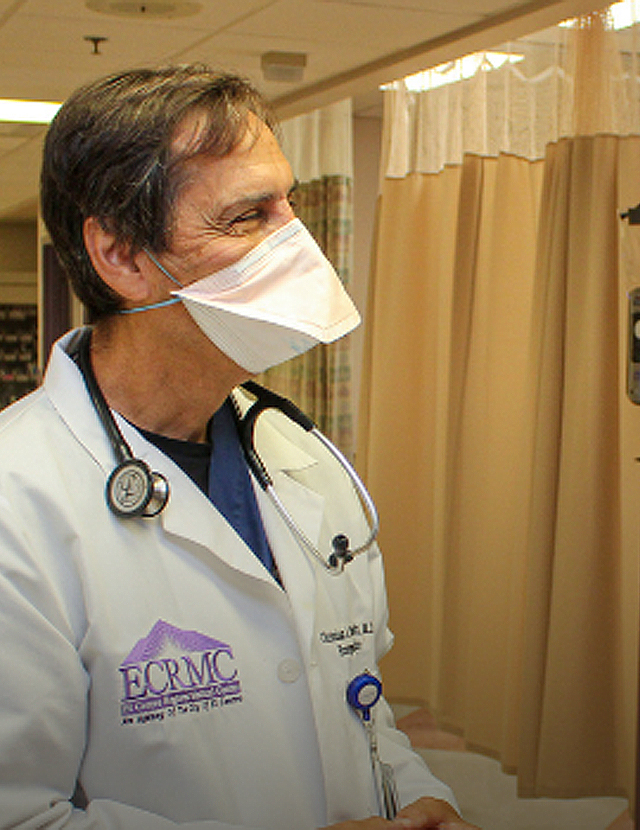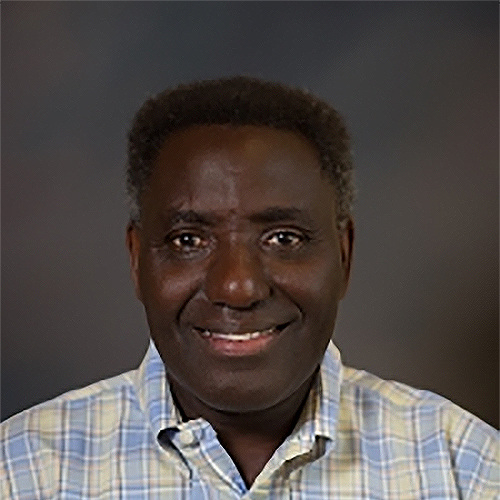Highlights

In the first 14 months since launching the CA Bridge program, the El Centro Regional Medical Center has treated over 300 people with substance use disorders, averaging about 22 per month—helping to connect patients to medication for addiction treatment (MAT) and other services, care and resources.
300 people with substance use disorders treated through the CA Bride program at the El Centro Regional Medical Center, in 14 months
38 providers became X-waivered, including all nurse practitioners and physician assistants
-
Focus Areas
Alcohol, Tobacco, Drugs & Mental Health, Capacity Building & Leadership -
Issues
Alcohol -
Strategic Initiatives
Opioids
El Centro Regional Medical Center’s Culture Change
The Largest Medical Center in Rural Imperial County
Imperial County covers an expansive geographical area along the edge of Southern California, although the official population is only 180,000 people. But with people crossing the border through Calexico, Mexico, all of the time, working in one country and living in the other, no one knows the exact population. What they do know, however, is that overdoses and substance use disorders are a significant problem on both sides of the border.
“We have unemployment rates four times the state average, lots of poverty and homelessness, and high instances of substance use disorders, with most of the drugs coming into the United States from Mexico through the border cities,” says Dr. Leslie Mukau, chief of staff at the 163 bed El Centro Regional Medical Center, the largest medical center in the county.
Changing Hearts and Minds
Alarmed by the escalating number of drug overdoses and deaths, Mukau knew he had to change the hospital’s culture and traditional approach to patients. Two years ago, he applied for a CA Bridge grant to help alter this frightening trajectory.
“Most physicians didn’t want to have anything to do with people on drugs. They didn’t show sympathy or express that there was anything they could do to help these patients. The CA Bridge program helped us change all that. We educated physicians that substance use disorder is a bona fide disease, not a moral failing, and should be treated like any other chronic disease, such as diabetes or hypertension,” he says.

Most physicians didn’t want to have anything to do with people on drugs. They didn’t show sympathy or express that there was anything they could do to help these patients. The CA Bridge program helped us change all that. We educated physicians that substance use disorder is a bona fide disease, not a moral failing, and should be treated like any other chronic disease, such as diabetes or hypertension.Dr. Leslie Mukau, chief of staff at the El Centro Regional Medical Center
Good News Travels Fast
After launching the CA Bridge program, he thought the ED might see five people with substance use disorders a month. However, in the past 14 months, they’ve treated over 300 people, averaging about 22 per month. Nearly two-thirds of those patients are now on medication for addiction treatment (MAT), which is proven to significantly improve patient survival, increase retention in treatment, and decrease illicit opioid use.
Mukau said, “Word quickly spread on the street that you can go to the ED, and they’ll help you with cravings, save your life and treat you as a human being.”
Before partnering with the CA Bridge program, only three providers in the hospital had X-waivers, which the U.S. Drug Enforcement Agency requires to prescribe MAT. In the past 14 months, 38 providers became X-waivered, including all nurse practitioners and physician assistants. Mukau started a newsletter to keep all providers informed on how many patients have been seen and how many followed up for appointments at the clinic.
The CA Bridge program also helped his team develop new partnerships with the police and sheriff’s departments, paramedics, and behavioral health workers. His team even convinced the police department to carry naloxone to treat overdoses.
Behavioral health workers are now an essential partner, helping reach out to people who use drugs. Mukau explains, “Normally when patients leave the Emergency Department, they give you their cell phone number and address so you can communicate with them. But most of our patients with opioid use disorder are homeless, live on the streets or in the park, and don’t have cell phones. Our workaround, prior to COVID-19, was to have the behavioral health workers find out where they hang out and send a car to bring them to the clinic. During the emergency room visit, we also register them for health care and find places for them to stay if they want to.”
CA Bridge is Here to Help
Mukau lists other ways that the CA Bridge program has helped El Centro Regional Medical Center successfully address substance use disorders in Imperial County, including educating hospital staff to use destigmatizing language, offering tools to treat patients, providing training on how to train others, bringing visibility to what is sometimes a hidden problem, and providing funding to hire a navigator. The navigator’s job is to bridge the patient between the hospital’s emergency department and the clinic where they receive MAT treatment, bridging the patient to ongoing care.
In addition, Mukau appreciates that each month the program has to report on their data. “This trove of information tells us how many people we’ve helped.” Data reporting is also a great way to set measurable goals to continue to improve patient care—inspiring him and his team to serve even more patients who need substance use treatment.
Feasible for Every Hospital
Mukau’s story proves that ED providers can rapidly change how they treat patients who use drugs. If you want to be part of the solution, reach out for technical assistance to get started.
This impact story first appeared on the CA Bridge site.
Work With Us
You change the world. We do the rest. Explore fiscal sponsorship at PHI.
Support Us
Together, we can accelerate our response to public health’s most critical issues.
Find Employment
Begin your career at the Public Health Institute.
